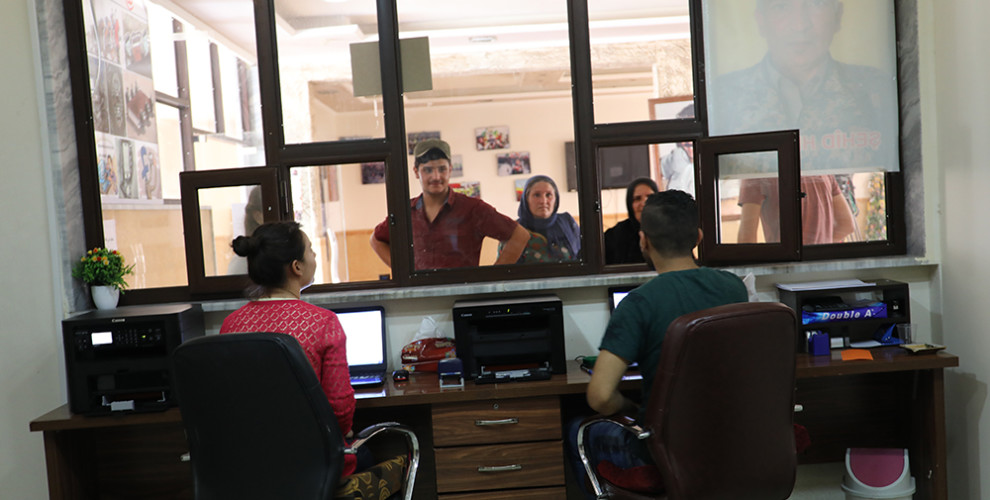Six thousands refugees returned to Rojava in two months
Thousands of people are going back to Rojava from South Kurdistan.
Thousands of people are going back to Rojava from South Kurdistan.

People from Rojava who had migrated to South Kurdistan are returning to their homes. In the last two months some 6,000 people have gone back to Rojava.
After the beginning of the Syrian crisis, over seven years ago, and with the war intensifying after the occupation by the DAESH (ISIS) mercenaries, the economic situation severely worsened.
Before the Syrian revolution, people of Rojava were forced to go to the big cities of Damascus and Aleppo to work because of the bad economic conditions. When the war began, in March 2011, they returned to Rojava.
The Rojava regions were ignored by the Ba'ath regime and the war disconnected them from other regions of Syria.
On the other hand, the Turkish and Iraqi border doors were closed respectively by the AKP and the KDP governments and a heavy embargo was imposed on the region.
Immigration from Northern Syria inevitably began.
KDP policies to empty Rojava
The KDP, which imposed an embargo on Rojava, pursued a policy of emptying Rojava and so did the AKP. Rojava people began to leave to fight poverty.
In this context, the KDP, on the one hand blocked the corridor through which humanitarian aid and vital goods were reaching Rojava, while on the other opened doors for migration from Rojava.
The KDP set up camps for the refugees from Rojava and opened the route to South Kurdistan.
Economy and security deteriorate in South Kurdistan
Together with these emigration policies, the KDP used some parties linked to it and operating in Rojava to its own interests.
After these policies and the referendum on independence, there was the closure of the border crossings to Iran and Turkey. Workers started to not get paid, and divisions among South Kurdish parties increased thus pushing the economy and the security situation towards a bad situation.
Strengthening economy and security in Rojava encouraged return
In the meantime the Rojava Revolution, in 2012, had meant among many things also a renaissance in economic, social and political areas. The Democratic Autonomous Administration had planned and worked hard to put the economy back on its feet and had taken care of the daily needs of citizens.
Thus, many new jobs were created in factories, cooperatives and offices.
The resistance struggle of the Rojava people together with their self-defense forces, the YPG-YPJ and Syrian Democratic Forces (SDF), meant that DAESH mercenaries were expelled from Northern Syria thus creating the opportunity to re-establish peace and security.
Thanks to this resistance, the Northern Syrian territories became the safest regions of Syria. These developments in the field of security and economy encouraged the Rojava refugees to return to their homes.
Six thousand people returned in two months
According to the information given to ANHA by the Sêmalka Border Gate authorities between South Kurdistan and Rojava, scores of Rojava refugees are returning to their homes every day.
Officials have recently said that on average 400 people return to Rojava daily.
Mihemed Xêr Berces, one of the officials at the Sêmalka Border Gate, noted that more than six people, mostly young, have entered Rojava in June and July alone.
Rojava refugees coming from South Kurdistan said that the region was no home to them.
Mihemed Ibrahim, from Qamishlo’s Antariya neighborhood, said he believed that South Kurdistan was not a permanent home for Rojava refugees, and that the South government did not treat refugees properly.
The economic crisis in South Kurdistan, said Abraham, meant Rojava refugees grew worried and wanted to return to Rojava.